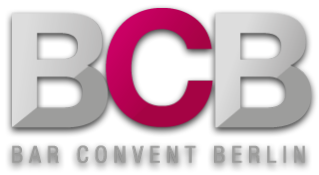Damien mixes: Hugo re-interpreted
© Damien Guichard
Bar ohne Namen
Entschlossen verweigert sich Savage, der Bar einen Namen zu geben. Stattdessen sind drei klassische Design-Symbole das Logo der Trinkstätte in Dalston: ein gelbes Quadrat, ein rotes Viereck, ein blauer Kreis. Am meisten wurmt den sympathischen Franzosen dabei, dass es kein Gelbes-Dreieck-Emoji gibt. Das erschwert auf komische Weise die Kommunikation. Der Instagram Account lautet: a_bar_with_shapes-for_a_name und anderenorts tauchen die Begriffe ‘Savage Bar’ oder eben ‚Bauhaus Bar‘ auf.
Für den BCB bringt Savage nun sein Barkonzept mit und mixt für uns mit Unterstützung von Russian Standard Vodka an der perfekten Bar dazu.
A new month, a new community cocktail! This time you had the choice between peanut butter and elderflower. The fresh and wonderfully fragrant elderflower was chosen as the winner and Damien Guichard got straight to mixing.
Elderflower is one of the most commonly used ingredients in the bar industry, as both an alcoholic and a non-alcoholic ingredient. It is even sometimes referred to as the “bartender’s ketchup”, due to its versatility.
How to use fresh elderflower correctly
But today it’s the fresh elderflower blossoms that we are interested in. They are often found around Germany this time of year, and are a great ingredient to forage. The blossoms are packed with pollen that contain its fragrant, floral aroma. When making syrups and infusions, you want to keep as much of that pollen as possible, so try not to rinse them too long if at all. Too much rinsing will wash away that great flavour. So basically, be careful not to forage in a dodgy spot.
Endless possibilities for drink creations
As elderflower is so common in Berlin, it is a fixture in bars and restaurants this time of year. Many craft cocktails are made using it, and the possibilities are endless. There are even some elderflower cocktails that have become Berlin fixtures over time.
© Damien Guichard
Hugo, but different
One of the things we love to do at Wax On is play around with classics and reinvent underappreciated drinks. So, my plan today is to have a go at a twist on the classic elderflower drink, the “Hugo”.
You will find people drinking Hugo on any terrace in Germany from March until late October: the popular drink consists of industrial elderflower syrup, Prosecco, and sparkling water - all served on ice with the old slapped mint sprig. Rather than take the usual approach and make an elderflower syrup or elderflower-infused spirit, I decided to take a less conventional approach. For this drink, we’re going to use elderflower water. Yes, water. The idea is imparting the flavor of elderflower to the water rather than the spirit or any other element of the cocktail. This ensures that the flavour is more subtle and long lasting.
Next step: carbonization
We are then going to batch the entire drink including the elderflower water, and finally we will carbonate the drinks as an entire batch. In order to do so we use a carbonation rig - a set up that allows us to connect PET bottles to a CO2 tank through a pressure regulator.
Carbonation is basically an infusion. And just like any infusion, you need two things – agitation and time. Over a period of 48 hours we “hit” each bottle of our carbonated cocktails 3 times with CO2 until they reach the right level of carbonation. We shake them, hit them with CO2, let them sit for a while and then repeat. Carbonation is also a game of patience. This process can take up to two days until the batched cocktail reaches the right level of carbonation.
© Damien Guichard
And finally, the grand finale...
We’re going to take our elderflower water, and combine it with this awesome natural Austrian Muscateller from Haider , a little bit of Verjus, and a mint eau de vie. Then instead of adding a source of carbonation, we’re going to carbonate the whole damn thing.
Et voila – now you’ve got yourself a pretty dope Hugo!
Cheers,
Yours Damien
Ingredients for a "Hugo 3000":
· 80ml Elderflower Water
· 40ml Haider Natural Wine
· 10ml Pisco Mosto Verde
· 15ml Verjus
· 10ml Simple Syrup
· 3ml Mint Eau de Vie
© Damien Guichard
